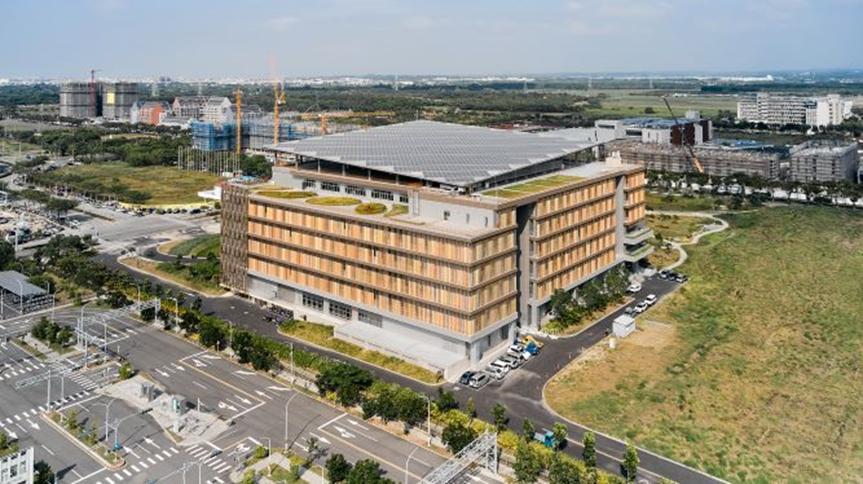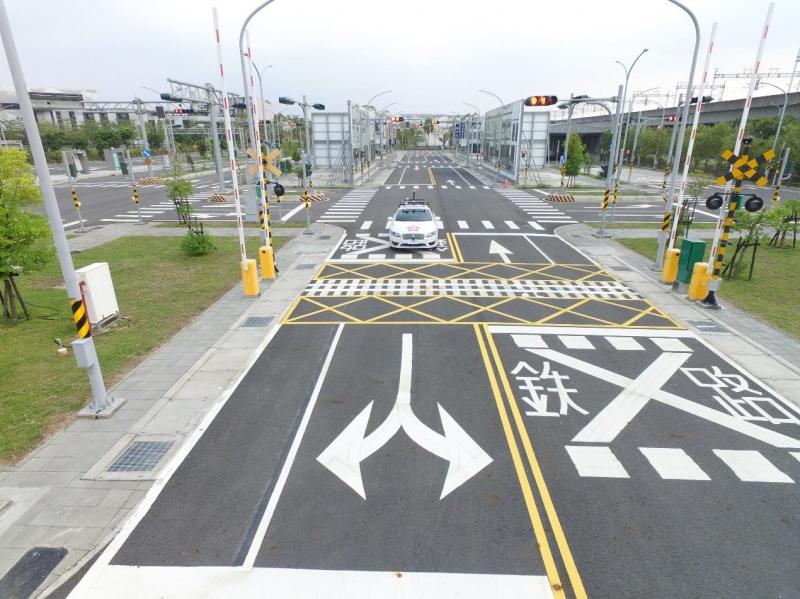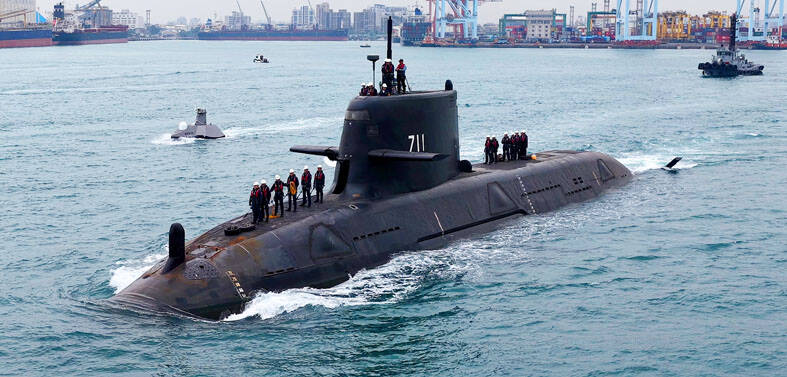With the escalation of international tensions and fierce industry competition, cybersecurity technology has become a focus of attention for countries worldwide. As the largest semiconductor manufacturing area in East Asia, Tainan is also conducting advanced research and development (R&D) into the field of cybersecurity.
In 2016, the Executive Yuan took a preemptive approach and, according to President Tsai Ing-wen's (蔡英文) 5+2 Industrial Innovation Plan, established a cybersecurity and smart technology R&D zone in Section C of the Shalun Smart Green Energy Science City.
Since the completion of the first building in April 2021, the occupancy rate has exceeded 90 percent.

Photo provided by Tainan Bureau of Economic Development
Tainan Mayor Huang Wei-che (黃偉哲) stated that the National Science and Technology Council has planned the development of a cybersecurity and smart technology research and development zone as a base for the development of cybersecurity, smart technology and new industries in Taiwan.
The development will be divided into two phases. The first phase involves cross-departmental cooperation and corporate resources to shape the industry's R&D and new entrepreneurial clusters. Currently, 19 related companies and 43 start-up teams have been recruited, including the National Institute for Cyber Security of the Ministry of Digital Affairs, the Administration for Digital Industries, Taiwan Car Lab, the Taiwan Tech Arena Southern Branch of the National Applied Research Laboratories, and uncrewed aerial vehicle and semiconductor IC design technology companies.
Currently, the R&D zone is constructing its second building and will attract international corporations to settle in by showcasing innovative technologies. Recently, Minister of Digital Affairs Audrey Tang (唐鳳) held a Southern Taiwan Cybersecurity Cluster Meeting at the Cybersecurity & Smart Technology R&D Building, which is not a branch of the Shalun Institute, but rather a vital part of it.

Photo provided by the Tainan Bureau of Economic Development
Tang emphasized that cybersecurity is not limited to northern Taiwan and invited southern leaders and related cybersecurity companies to seek assistance from the Ministry of Digital Affairs in the Shalun Institute if needed.
Huang also promised to fully support the central government's promotion of cybersecurity clusters and to establish basic public facilities, such as hospitals, to develop a talent cultivation base.
The R&D sector in the Shalun Smart Green Energy Science City has gradually matured and stabilized. According to Tainan Economic Development Bureau Director Lin Rongchuan (林榮川), the total R&D investment of the companies stationed in the city has reached NT$350 million (US$11.31 million).
With the input of high-density R&D talent and energy, it has also driven their revenue steadily upward. The total estimated revenue is expected to reach NT$1.54 billion.
The Shalun Smart Green Energy Science City is located at the core of the southern "S industry corridor," adjacent to Taiwan High-Speed Rail, Taiwan Railways Administration and the Taiwan No. 86 Expressway. It is within half an hour's reach of the Southern Taiwan Science Park and various industrial parks in Tainan.
With its convenient transportation and living functions, the business volume and revenue of the stationed companies can achieve the pioneer effect of R&D-driven investment. Through the joint efforts of the Shalun Smart Green Energy Science City and the Southern Taiwan Science Park, it will definitely become the core engine for the development of technology and economy in southern Taiwan.
Ad provided by the Bureau of Energy, Ministry of Economic Affairs and the Tainan Bureau of Economic Development

US climber Alex Honnold is to attempt to scale Taipei 101 without a rope and harness in a live Netflix special on Jan. 24, the streaming platform announced on Wednesday. Accounting for the time difference, the two-hour broadcast of Honnold’s climb, called Skyscraper Live, is to air on Jan. 23 in the US, Netflix said in a statement. Honnold, 40, was the first person ever to free solo climb the 900m El Capitan rock formation in Yosemite National Park — a feat that was recorded and later made into the 2018 documentary film Free Solo. Netflix previewed Skyscraper Live in October, after videos

NUMBERS IMBALANCE: More than 4 million Taiwanese have visited China this year, while only about half a million Chinese have visited here Beijing has yet to respond to Taiwan’s requests for negotiation over matters related to the recovery of cross-strait tourism, the Tourism Administration said yesterday. Taiwan’s tourism authority issued the statement after Chinese-language daily the China Times reported yesterday that the government’s policy of banning group tours to China does not stop Taiwanese from visiting the country. As of October, more than 4.2 million had traveled to China this year, exceeding last year. Beijing estimated the number of Taiwanese tourists in China could reach 4.5 million this year. By contrast, only 500,000 Chinese tourists are expected in Taiwan, the report said. The report

Temperatures are forecast to drop steadily as a continental cold air mass moves across Taiwan, with some areas also likely to see heavy rainfall, the Central Weather Administration (CWA) said. From today through early tomorrow, a cold air mass would keep temperatures low across central and northern Taiwan, and the eastern half of Taiwan proper, with isolated brief showers forecast along Keelung’s north coast, Taipei and New Taipei City’s mountainous areas and eastern Taiwan, it said. Lows of 11°C to 15°C are forecast in central and northern Taiwan, Yilan County, and the outlying Kinmen and Lienchiang (Matsu) counties, and 14°C to 17°C

STEERING FAILURE: The first boat of its class is experiencing teething issues as it readies for acceptance by the navy, according to a recent story about rudder failure The Hai Kun (海鯤), the nation’s first locally built submarine, allegedly suffered a total failure of stern hydraulic systems during the second round of sea acceptance trials on June 26, and sailors were forced to manually operate the X-rudder to turn the submarine and return to port, news Web site Mirror Daily reported yesterday. The report said that tugboats following the Hai Kun assisted the submarine in avoiding collisions with other ships due to the X-rudder malfunctioning. At the time of the report, the submarine had completed its trials and was scheduled to begin diving and surfacing tests in shallow areas. The X-rudder,